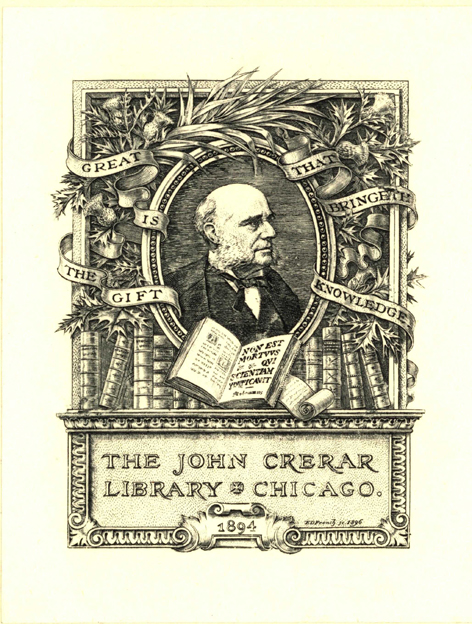Review by Choice Review
We live in the age of computers. Like other inventions that serve us well, computers also have a history. One important dimension of that history relates to a theme as abstruse and abstract as the limits of human knowledge. Is there any way to recognize or establish such limits on purely logical grounds? The question is not trivial, and some of the best minds in mathematics and physics have grappled with this question. Kurt Godel's famous theorem (1930s) was central to this. In this slender volume, science writer Casti (Santa Fe Institute; Technical Univ. of Vienna) distills the essentials of this and a number of related topics (like quantum logic and thinking machines) in a fascinating genre of scientific fiction. The story involves the legendary characters John von Neumann, Albert Einstein, Kurt Godel, J. Robert Oppenheimer, and Lewis L. Strauss (the only tragic figure in the story). The players come alive in the re-created episodes. Those who are familiar with the names and topics will find the book delightful, if not deep; but even those with only a basic background in science and mathematics will find it absorbing and informative. ^BSumming Up: Highly recommended. Upper-division undergraduates through faculty. V. V. Raman emeritus, Rochester Institute of Technology
Copyright American Library Association, used with permission.
Review by Booklist Review
Imagine a physics textbook in which the great scientists suddenly come to life as unpredictable characters sauntering down shady streets as they debate cosmic theories. Just as he did in The Cambridge Quintet (1998), Casti blends real science with compelling fiction. In this narrative--set in 1948 at Princeton's Institute for Advanced Study (IAS)--Einstein pits his formidable mind against the disquieting paradoxes of quantum physics, while Kurt Godel contemplates the possibilities for time travel in a relativistic universe. But when a restless John van Neumann begins to lobby for funds to launch a computer project of unprecedented scope, IAS conservatives bristle, resentful of the irreverent genius who would pollute their realm of pure theory with an electronic machine. Most readers will finally care less about van Neumann's maneuverings than about the ongoing dialogue between intellectual pioneers pondering the expanding horizons and eventual limits of human science. Thanks to Casti's daring imagination, we are allowed to intrude on the exclusive world of IAS and listen in on the profound conversations of its brightest luminaries. Bryce Christensen
From Booklist, Copyright (c) American Library Association. Used with permission.
Review by Publisher's Weekly Review
Mathematician Kurt Godel, atomic physicist Robert Oppenheimer and Albert Einstein are among the cast of Casti's new novel (after The Cambridge Quintet), a speculative recreation of the debates that took place in the late 1940s at the Princeton University's Institute for Advanced Study. The book, which Casti describes as "scientific fiction," is composed mainly of dialogues between the scientists and mathematicians as they ponder the limits of human logic. These discussions aren't entirely abstract; the professors consider the philosophical and psychological implications of nascent computer technology and the atom bomb, among other inventions. Casti laces the book with descriptions of the IAS, the "platonic heaven" of the title, where the best thinkers of their day are able to do their research and talk to one another free from the other responsibilities of academia. T.S. Eliot, the lone poet spending "a term in Princeton" with the scientists, makes a cameo appearance during one of the afternoon teas at which the researchers gather daily. Casti knows his subject and explains it lucidly; the discussions of physics and math are reasonably accessible and quite engaging. But his attempts to make the scientists into characters rely on stiff, cliched descriptions ("Eliot's poetic soul cringed at this interchange"), and the conversational framework is stilted: "Oppenheimer turned to Eliot and asked in a resonant directorial voice, `Well, Tom, I see that Pauli and Weyl haven't yet managed to reconcile themselves in the realm of physics. What do you think about the aesthetic differences between the poet and the physicist?'" The book doesn't quite succeed as fiction, but readers eager to explore the principles of theoretical physics and math may appreciate Casti's reconstruction of the great debates. 3-city author tour. (May) (c) Copyright PWxyz, LLC. All rights reserved
(c) Copyright PWxyz, LLC. All rights reserved
Review by Library Journal Review
What do geniuses talk about when they get together socially? Effective science writing can convey the personalities of scientists, revealing their humanity. In this work of "scientific fiction," Casti takes that technique a step further by inventing situations and supposing dialogs between some of the heroes of 20th-century science. Based upon fact, the scenario is set at Princeton's Institute for Advanced Study in the late 1940s, and the dramatis personae include the likes of Albert Einstein, Kurt Godel, John von Nuemann, J. Robert Oppenheimer, and other elite intellectuals. Their fictionalized conversations, which take place in settings from the corner diner to the university board room, represent the actual beliefs, theories, and philosophies of the various protagonists on the nature of science. As would be expected among a gathering of super brains, the ideas cover the gamut, the intellectual dynamic is lively, and, above all, the conversation honestly reflects the positions of each individual. Still, the situations can seem staged, the dialog scripted, and the personalities one-dimensional. As a pedagogical work, this book succeeds in presenting the viewpoints of important historical scientists. As a speculative work, it succeeds in raising valid questions about the scope and limits of scientific endeavor. The fictionalization, though, is entirely a technique for achieving those purposes and succeeds only to the degree that its contrivances do not create distractions.-Gregg Sapp, Science Lib., SUNY at Albany (c) Copyright 2010. Library Journals LLC, a wholly owned subsidiary of Media Source, Inc. No redistribution permitted.
(c) Copyright Library Journals LLC, a wholly owned subsidiary of Media Source, Inc. No redistribution permitted.
Review by Choice Review
Review by Booklist Review
Review by Publisher's Weekly Review
Review by Library Journal Review

